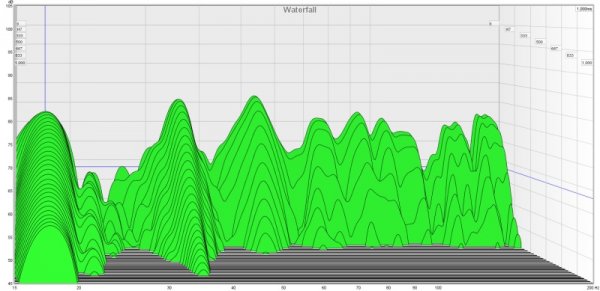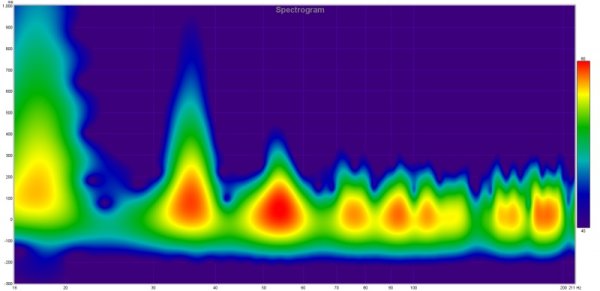Corner Bass Traps - Always beneficial?
- Thread starter edorr
- Start date
You are using an out of date browser. It may not display this or other websites correctly.
You should upgrade or use an alternative browser.
You should upgrade or use an alternative browser.
Exactly. There are numerous ways to do this.

What type of traps are being used at point of first reflection on the side wall in this picture? They look very interesting. Is this a type of absorption/diffusion combo trap? How deep are they? Thanks,ML
Looking at the characteristics this is the type of panel I would not use at first reflection points for stereo - they seem to have almost 100% absorption over 500 Hz and only 50% at 250 Hz.
Looking at the characteristics this is the type of panel I would not use at first reflection points for stereo - they seem to have almost 100% absorption over 500 Hz and only 50% at 250 Hz.
It has always been my understanding that HF absorption (500hz +) is what's desirable at point of first reflection.
^^^ Yes, mainly because at low frequencies the wavelengths are long and you are into room modes so the "reflection points" become somewhat meaningless...
It has always been my understanding that HF absorption (500hz +) is what's desirable at point of first reflection.
The type of treatment at first reflection points will depend on your preferences, but if you want to have absorption it should be uniform along the whole spectrum over the transition zone. F. Toole refers to this subject in his book, and several of our experts also have debated it in a previous thread more than one year ago.
A naive question - considering a rectangular room a large bass trap could be built in the back wall? Or its performance will be better if located at the front wall?
Not naïve at all. The answers is both walls. If a wall could be built to absorb 100 percent of the sound at all bass frequencies, over the entire wall area, then doing only the rear wall might be acceptable. But in practice bass traps are best placed in as many locations as one can manage. Further, unless the speakers are built into the front wall, their rear radiation at low frequencies will hit that wall causing peaks and nulls. So that's another reason to treat both walls.
--Ethan
Not naïve at all. The answers is both walls. If a wall could be built to absorb 100 percent of the sound at all bass frequencies, over the entire wall area, then doing only the rear wall might be acceptable. But in practice bass traps are best placed in as many locations as one can manage. Further, unless the speakers are built into the front wall, their rear radiation at low frequencies will hit that wall causing peaks and nulls. So that's another reason to treat both walls.
--Ethan
Thanks!
---Micro, Congrats in reaching 3,000 posts!
Bob,
And still a lot to say and to learn ...
It is a fantastic hobby!
Bob,
And still a lot to say and to learn ...
It is a fantastic hobby!
Liked the above statement microstrip! Thanks...
Micro, would you mind posting the RT60 graph from these results as well?
I will do it later today.
I will do it later today.
Thanks, Just curious.
Here is the response (both speakers together) I got in my room, along with the RT-60. Looks like I have a couple of nasty nulls, and that my room is a little over damped.


Edit: I do have the 8 RealTraps I mentioned earlier in this thread, on order. So, it will be interesting to see what they contribute.
Last edited:
Now, a challenge for the experts in decay time analysis. The two attached pictures show measurements made with REW using a Behringer ECM8000. The room is 31 x 13 x 8 feet . Can you comment on them?
It looks like a room.
Seriously, the decay times aren't terrible except for the lowest two modes. Fortunately, most music has little if any energy at 35 Hz, and probably nothing at 18 Hz. If this room also serves as a theater, the extra oomph at 18 Hz could be seen as a plus!
--Ethan
Similar threads
- Replies
- 16
- Views
- 8K
- Replies
- 10
- Views
- 4K
- Replies
- 48
- Views
- 5K
- Replies
- 24
- Views
- 5K
- Replies
- 4
- Views
- 1K
| Steve Williams Site Founder | Site Owner | Administrator | Ron Resnick Site Owner | Administrator | Julian (The Fixer) Website Build | Marketing Managersing |



